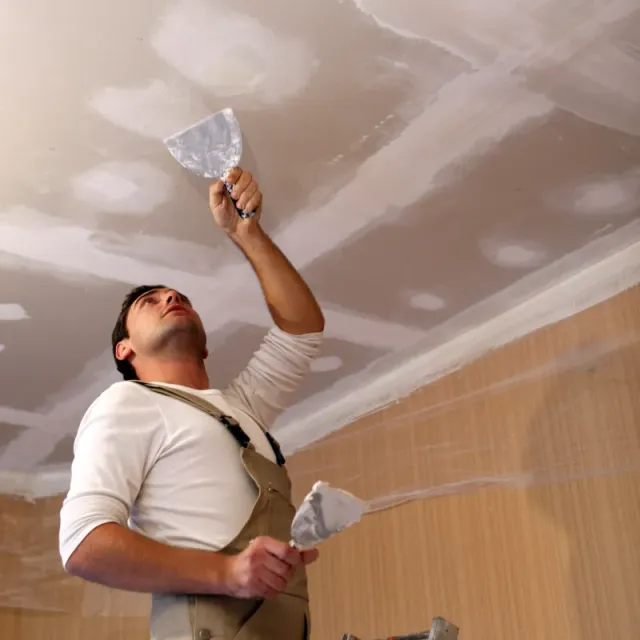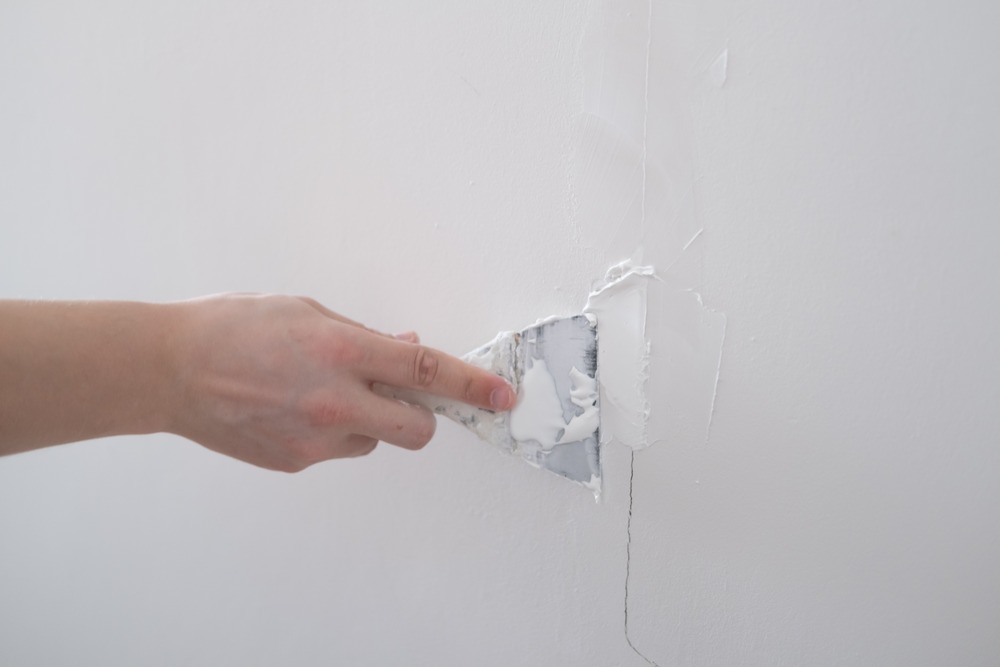Step-by-Step Approaches to Getting Flawless Drywall Repair Work and Installment
Attaining remarkable drywall repair and installment requires an organized approach. It includes recognizing the various types of drywall and the devices required for the task. Correct area prep work is vital before starting any job. Drywall Installation Ogden Utah. Each action, from patching openings to setting up new sheets, needs focus to detail. The procedure doesn't end with installation; finishing techniques are critical for a polished look. The next steps will ensure a smooth outcome, however what precisely do they involve?
Comprehending Drywall Types and Equipment Needed

The installation tools are equally crucial. An energy blade is important for cutting drywall sheets, while a drywall saw can assist in making specific cuts for outlets or fixtures. T-squares assure accurate measurements, and drywall screws or nails protect the panels to wall studs. In addition, a drywall lift can facilitate the installation of large sheets, reducing physical strain. Familiarity with these devices and kinds appreciably adds to the efficiency and quality of drywall projects.
Preparing the Area for Repair Work or Setup
Preparing the area for drywall repair service or setup is essential to assure a reliable and smooth procedure. The surrounding area must be cleared of furniture and other obstacles to provide ample working area. This not just ensures safety however also avoids damage to personal belongings. Next off, it is important to cover the floor with ground cloth to catch any debris or dirt generated during the job.
Additionally, the wall surfaces must be examined for any loosened paint or wallpaper that might disrupt attachment. Eliminating these elements creates a tidy surface for the brand-new drywall. Prior to beginning, it is recommended to transform off power to electric outlets or fixtures around. Guaranteeing adequate lights in the work area will certainly better improve visibility and emphasis throughout the repair or installment process. Drywall Repair Ogden UT. By meticulously preparing the location, one prepares for a successful drywall task
Step-by-Step Process for Patching Holes

Patching openings in drywall calls for an organized technique to ensure a seamless repair work. The primary step involves reviewing the size of the hole. For small openings, a patching compound may be enough, while bigger holes demand a patch. Next, the damaged area ought to be cleaned and prepared by eliminating any type of loose particles.
For tiny holes, using spackling substance with a putty knife is advised, smoothing it over the opening and feathering the edges. As soon as dry, sanding the area guarantees a smooth coating. For bigger openings, a drywall spot ought to be reduced to size, positioned over the opening, and protected with screws. After setting up the patch, the very same spackling process is duplicated, complied with by sanding.
Ultimately, the patched area should be primed and painted to match the bordering wall surface. This meticulous process assures a specialist look and prolongs the lifespan of the repair work.
Installing New Drywall Sheets: A Comprehensive Overview
Setting up new drywall sheets requires mindful planning and execution to guarantee a aesthetically enticing and strong surface. Initially, the location has to be determined properly to determine the variety of sheets required. It is crucial to select the right thickness, generally 1/2-inch for indoor wall surfaces and 5/8-inch for ceilings or fire-rated applications.
Next, the studs or framework ought to be checked for any kind of irregularities, ensuring they are straightened and correctly spaced. When putting the drywall sheets, they ought to be positioned horizontally to minimize seams and improve structural integrity. A drywall lift can be advantageous for above installations.
Fastening the sheets with drywall screws at proper intervals makes sure a protected installation. It is necessary to countersink the screws slightly listed below the surface area to get ready for the completing procedure. Adhering to these standards will result in a solid foundation, prepared for the next action in drywall ending up.
Completing Touches: Taping, Mudding, and Sanding Strategies
When the drywall sheets are securely attached, the emphasis shifts to the complements that will certainly offer a polished look. This procedure starts with taping, utilizing either paper or fiberglass harmonize tape to cover the joints in between sheets. The tape assures a smooth change, decreasing the danger of breaking. Complying with taping, mudding is important; a joint substance is applied over the tape to fill spaces and produce a seamless surface area. Commonly, several coats are needed, each one feathery out additionally than the previous to lessen visibility.
After enough drying time, sanding is the last action in attaining a perfect coating. A fine-grit sandpaper is made here use of to smooth the dried out compound, guaranteeing there are no bumps or imperfections. Focus to information throughout this phase is significant, as it significantly impacts the total look of the wall. Completion outcome ought to be an even, professional-looking surface area prepared for priming and painting.
Regularly Asked Inquiries
Exactly how Do I Select the Right Drywall Thickness for My Task?
To select the best drywall density, think about the job's purpose, area, and architectural requirements. Standard densities include 1/2-inch for general usage and 5/8-inch for fire-rated applications, making sure durability and conformity with building ordinance.

Can I Install Drywall Over Existing Drywall?
Yes, installing drywall over existing drywall is feasible. Nonetheless, it is essential to ensure the underlying surface is safe and totally free from damages. Appropriate attachment and factor to consider of density are vital for an effective installation.
What Are the most effective Practices for Drywall Disposal?
The most effective techniques for drywall disposal consist of reusing when possible, utilizing regional waste management solutions, and adhering to guidelines for harmful materials if relevant. Interior Painting. Properly classifying and sealing waste guarantees compliance and safety and security during disposal
The length of time Should I Await Mud to Dry Before Sanding?
Generally, one need to wait 24-hour for drywall mud to completely dry before sanding. Nonetheless, drying out time can vary based on moisture and temperature level, so looking for a company texture is advisable prior to continuing.
Are There Eco-Friendly Drywall Options Available?
Yes, eco-friendly drywall choices are readily available. These alternatives typically make use of recycled products, low-VOC adhesives, and sustainable production techniques, reducing environmental effect while supplying reliable insulation and resilience for different building and construction and renovation jobs.
An energy blade is essential for cutting drywall sheets, while a drywall saw can help in making accurate cuts for components or electrical outlets. Preparing the area for drywall repair service or setup is crucial to assure a reliable and smooth procedure. Covering openings in drywall needs a methodical technique to ensure a smooth repair service. Setting up new drywall sheets needs cautious planning and execution to ensure a sturdy and aesthetically enticing finish. Yes, installing drywall over existing drywall is feasible.